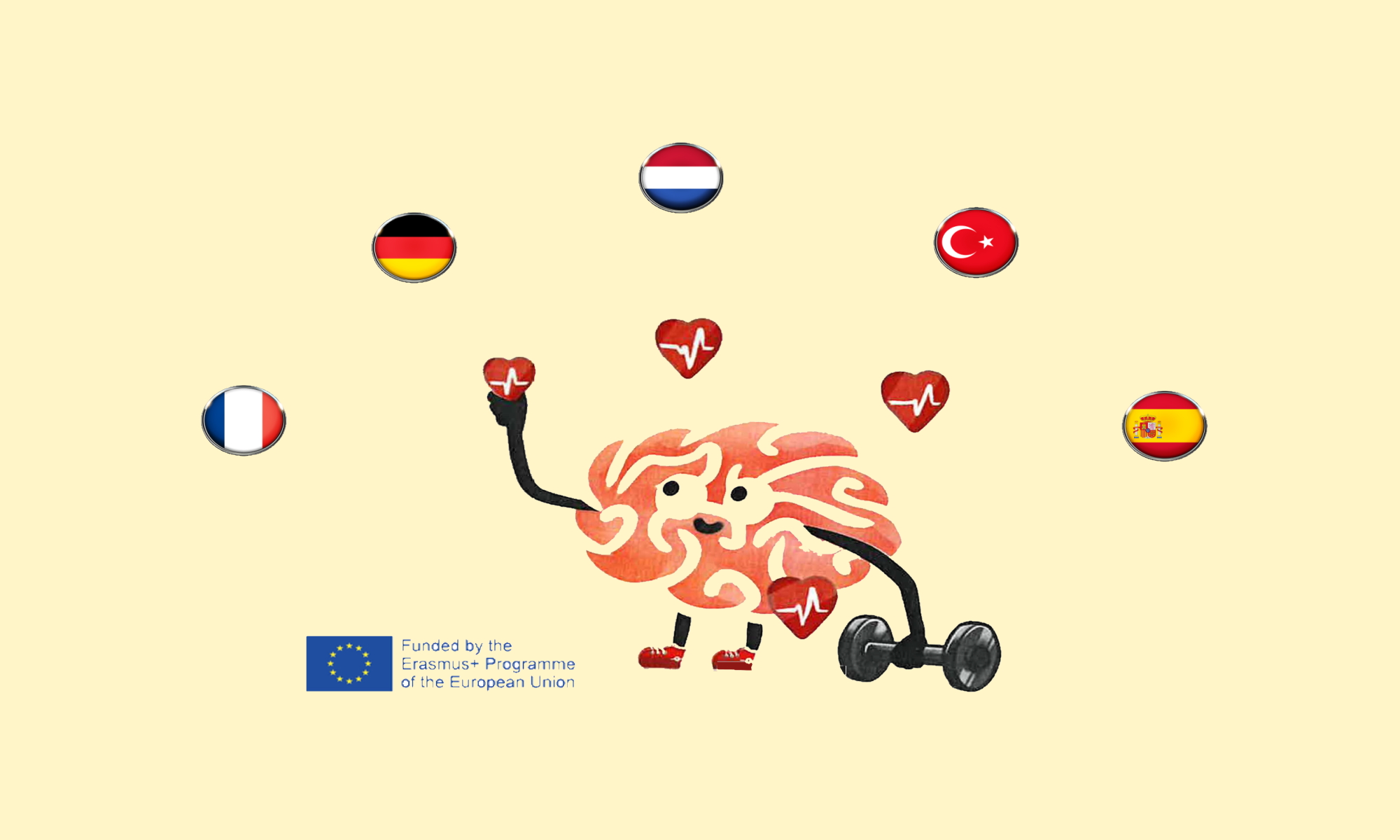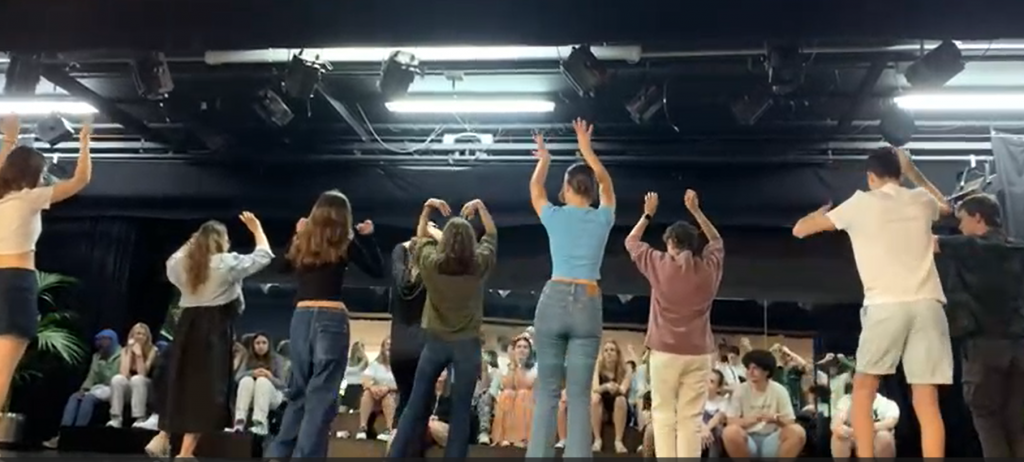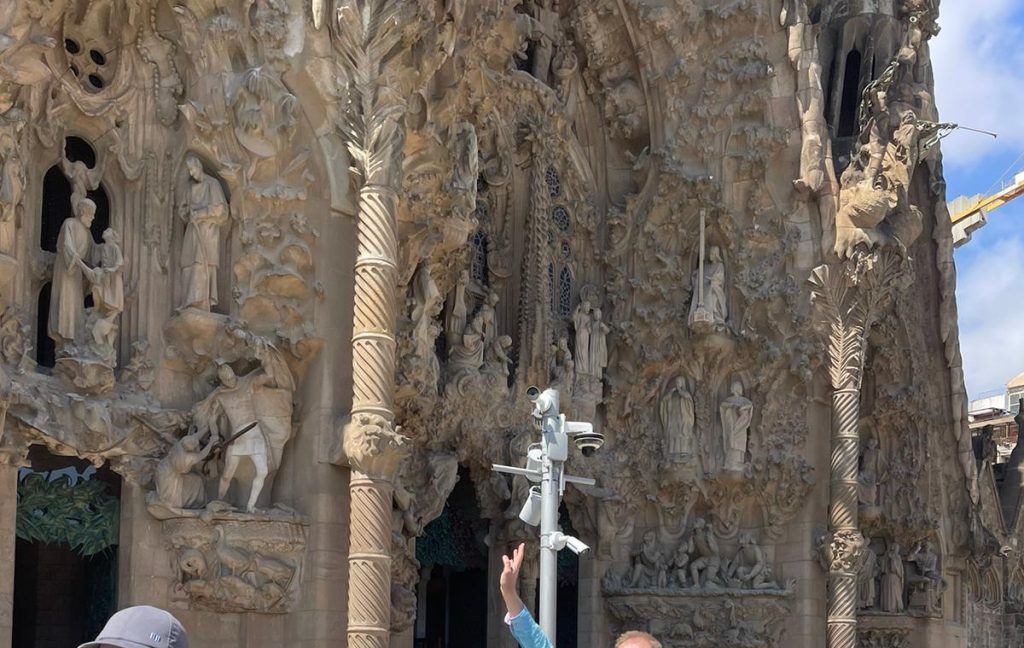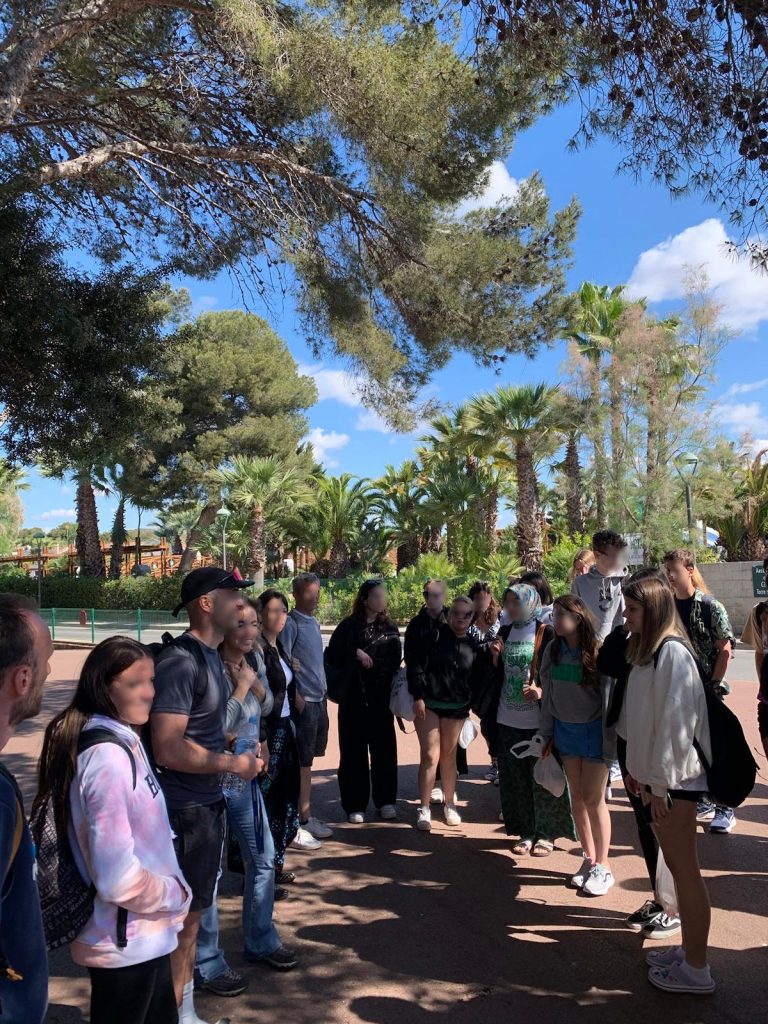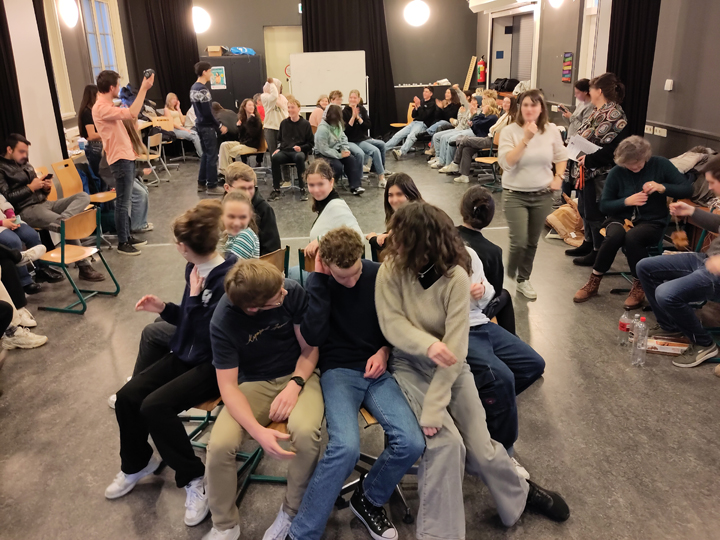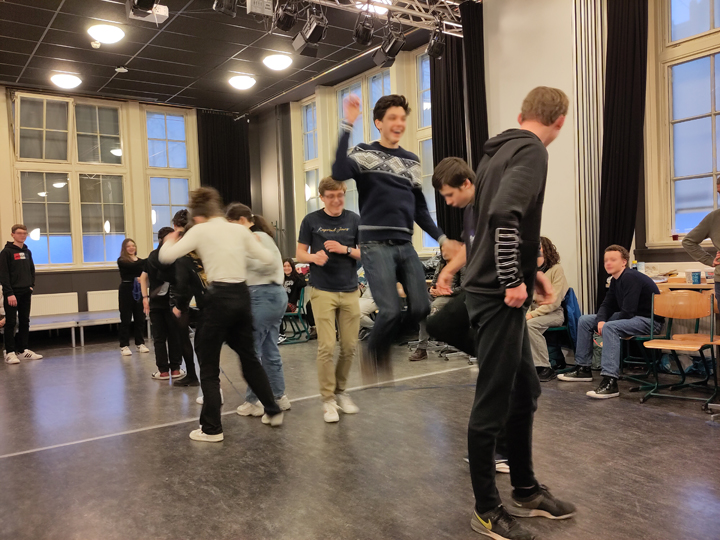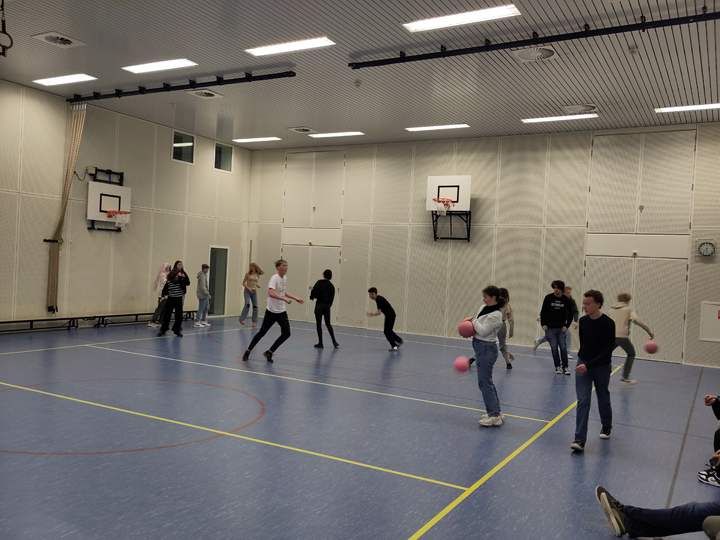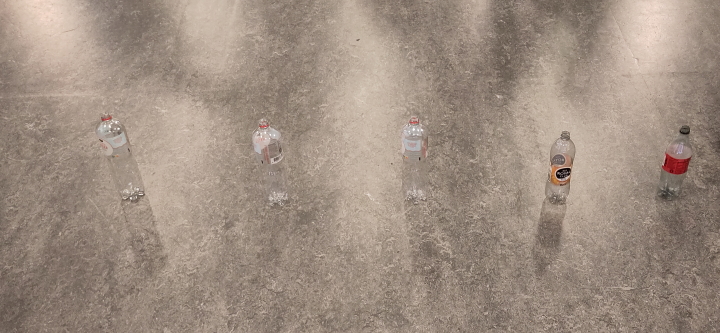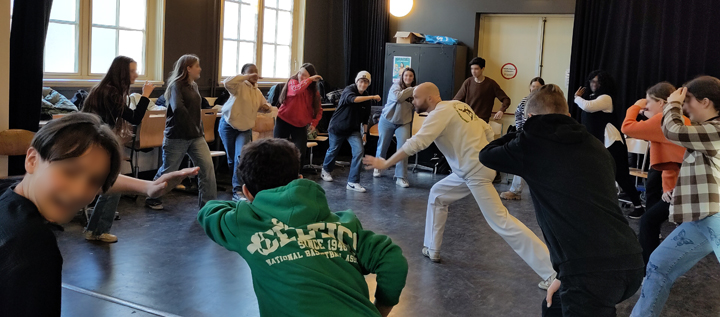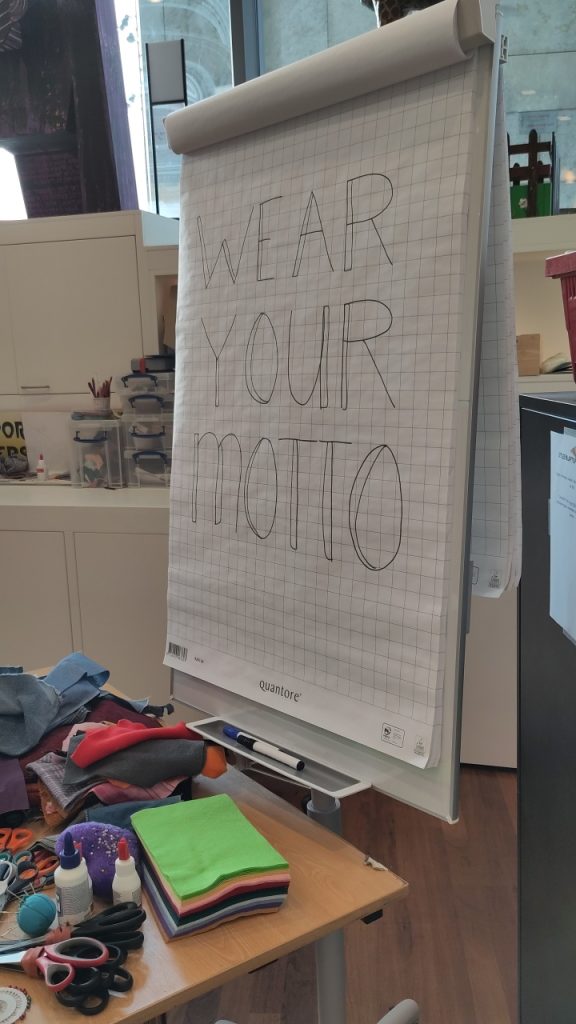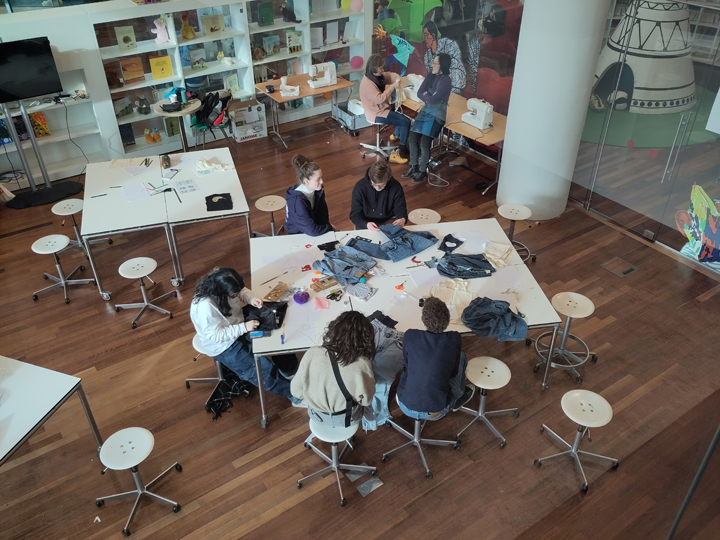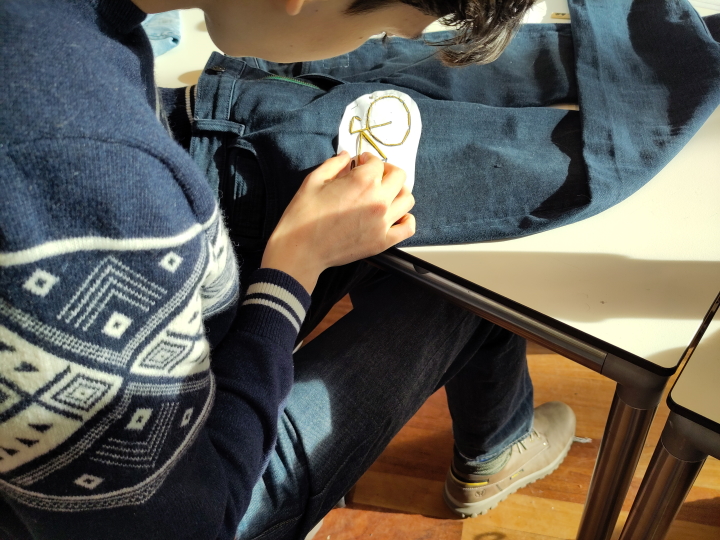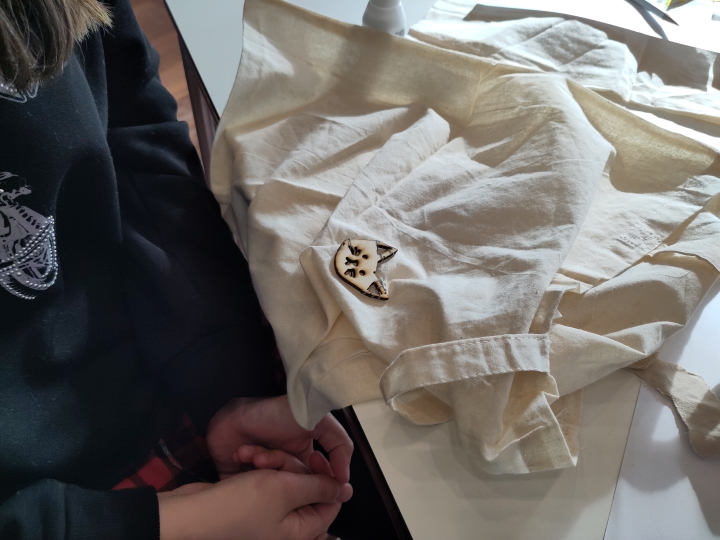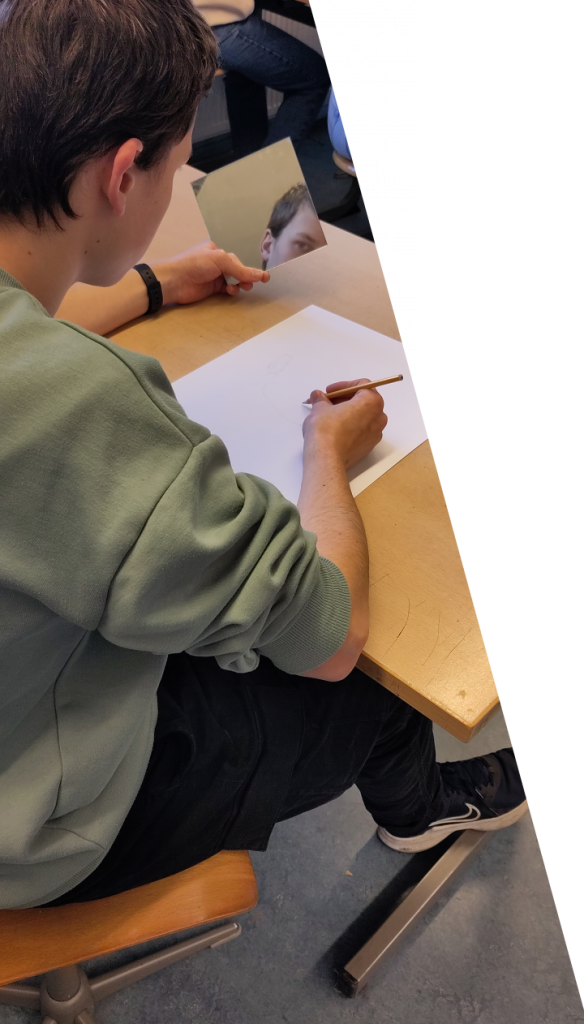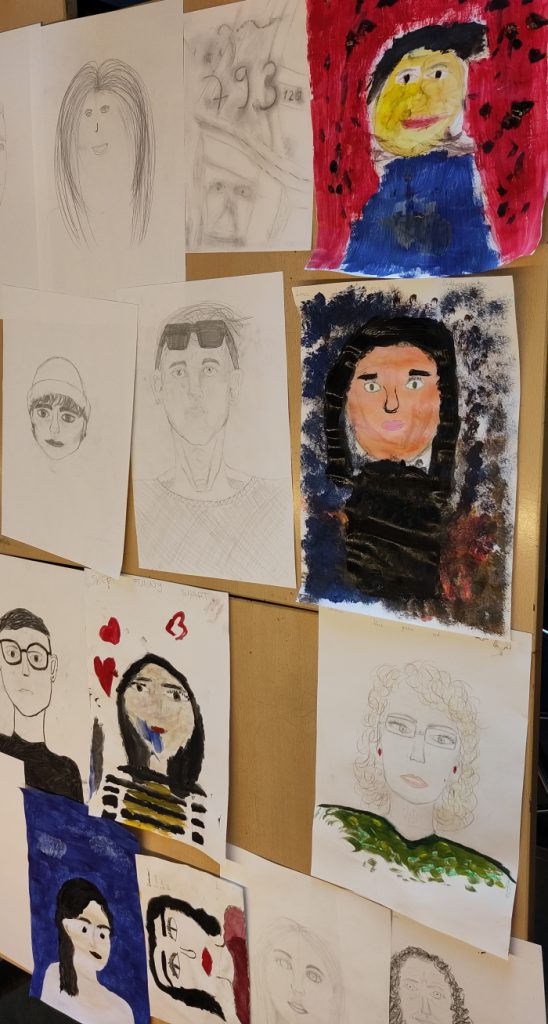On the second day of our Erasmus exchange meeting, students from France, Germany, the Netherlands, Spain and Türkiye immersed themselves in a day filled with exploration, learning, and cultural exchange. Here is a short insight:
1. Welcome Activities at the Library
The morning commenced with a warm welcome at the school library. Students gathered amidst shelves of books, representing the vast knowledge and diversity of our continent.
2. School Visit
Next, we embarked on a journey through the school hosting this exchange. The corridors echoed with chatter as students mingled with their peers from different countries. Classroom doors swung open, revealing glimpses of varied teaching methods and educational systems.
3. Workshop: “Sports in My City”
Students collaborated on creating a booklet titled “Sports in My City.” Each participating school / country contributed insights about their hometown’s and their country’s sporting culture. From football stadiums to swimming pools, the pages were filled with anecdotes and facts. The booklet became a mosaic of European athleticism.
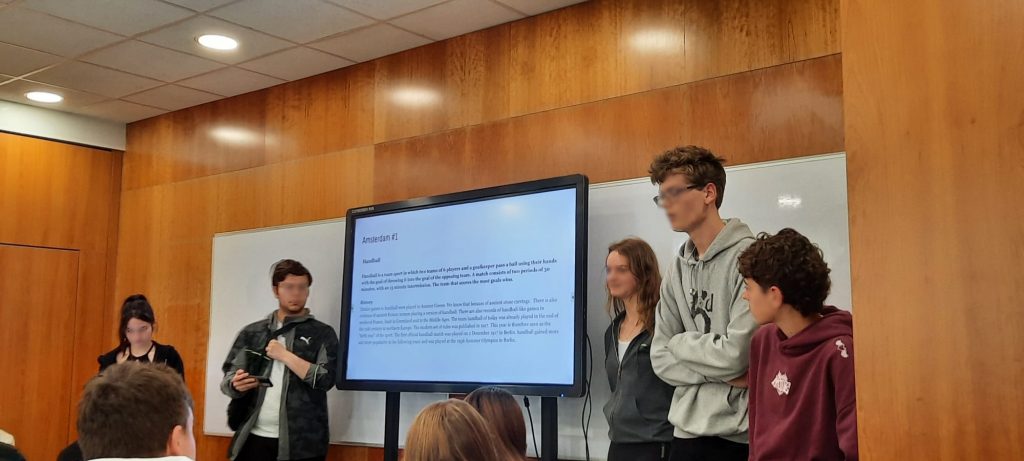
4. Workshop: “Sports Heroes” Presentation
Here, students researched and shared stories of legendary athletes who had left indelible marks on their respective nations. From sprinters to soccer players, the room resonated with admiration and inspiration. It also became clear, that some sport heroes are well-known and famous beyond borders—while others are practically unknown outside their home countries.
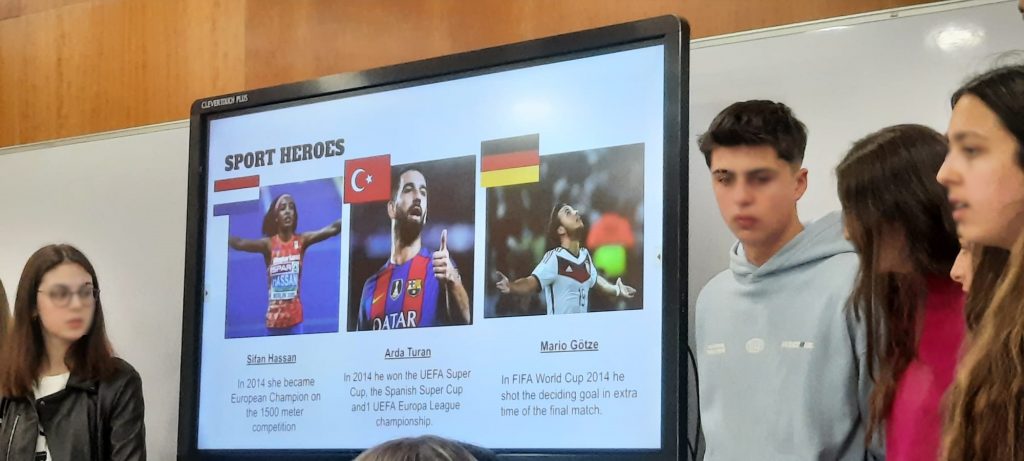
5. European Day
In the school auditorium, presentations and talks centred around the topic of Europe. This activity was not restricted to the exchange group. Instead, it was a school wide activity to which the guests were also invited.
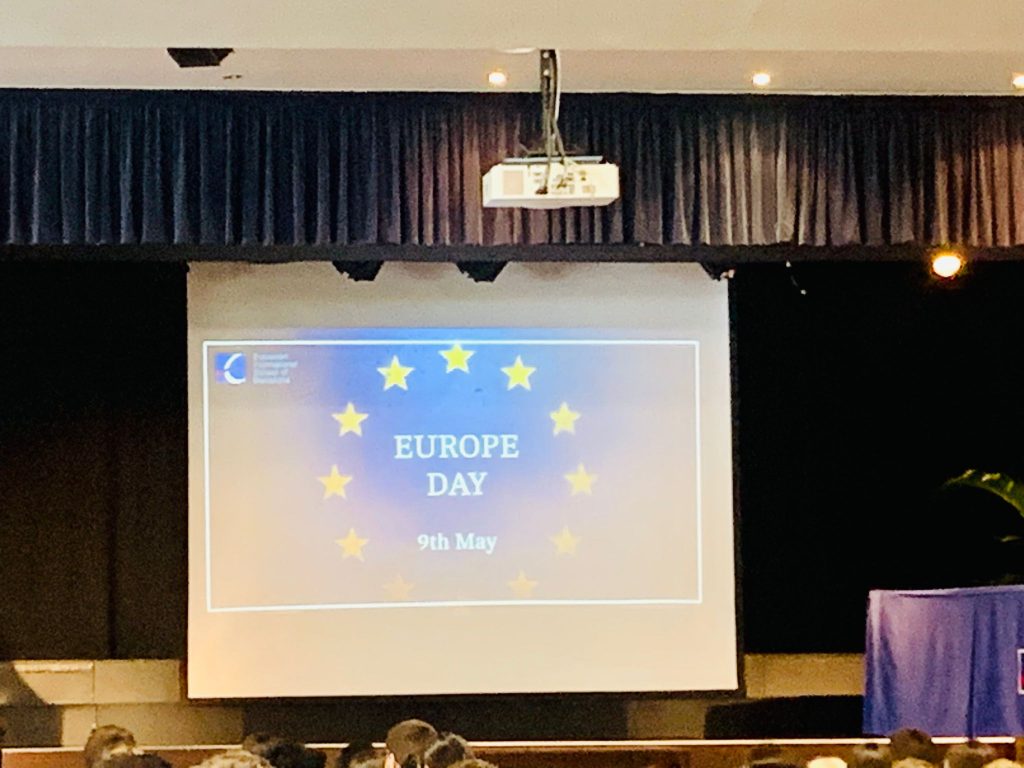

Connecting Sports and Our Activities:
Throughout the day, the theme of sports wove through our experiences:
- Team Spirit: Just like in sports, we collaborated, cheered for each other, and celebrated victories—whether in the library, classrooms, or on stage.
- Endurance: Our exploration mirrored an athletic endeavour. We climbed intellectual peaks, jogged through cultural nuances, and sprinted toward understanding.
- Diversity: Sports unite people across borders. Similarly, our exchange meeting showcased the richness of European cultures, emphasizing unity in diversity.
In summary, the second day of our Erasmus exchange meeting was a tapestry of shared knowledge, spirited conversations, and a celebration of our interconnectedness.
